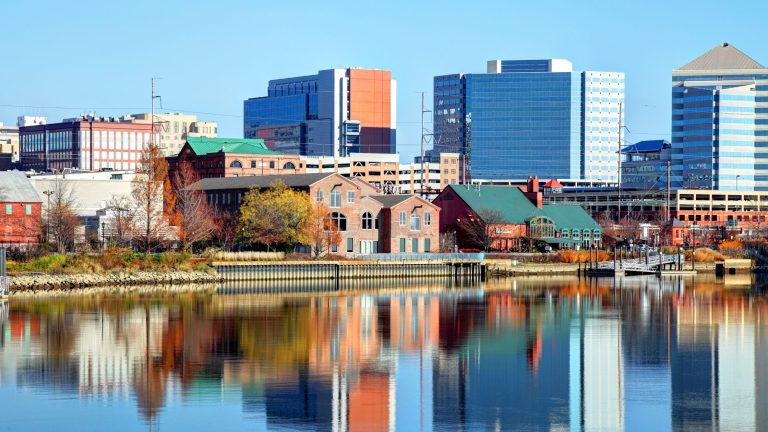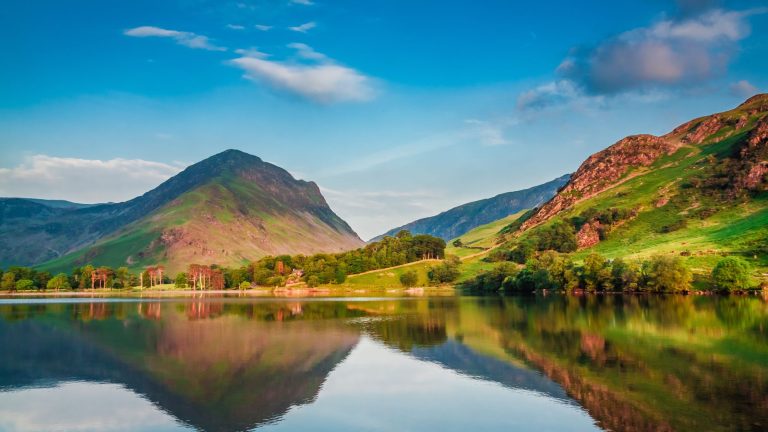Croatia Unveiled: Where Crystalline Lakes Meet Ancient Stones and Island Dreams Become Reality
Picture yourself standing on weathered wooden boardwalks suspended above Plitvice’s turquoise cascades, as morning mist transforms waterfalls into liquid silk, with only the rushing water and your breath catching at such impossible beauty.
Now imagine that same wonder multiplied across a thousand experiences—kayaking through sea caves beneath Dubrovnik’s medieval ramparts, cycling through Istrian vineyards heavy with Malvazija grapes, or discovering hidden swimming coves on Vis where the Adriatic achieves an almost supernatural shade of sapphire. Croatia doesn’t just offer destinations; it orchestrates symphonies of sensory experiences where every Roman stone, every lakeside path, every island sunset becomes a movement in your personal Mediterranean masterpiece.
The magic of Croatia lies in its refusal to be categorized—this is simultaneously Europe’s best-preserved medieval coast and its most vibrant festival playground, home to both protected wilderness where no swimming disturbs ancient ecosystems and beaches where August transforms every cove into an amphitheater of summer joy.
Let’s navigate this remarkable tapestry together, revealing not just what to do but how to weave these experiences into journeys that capture Croatia’s multifaceted soul.
What Are the Must-See Attractions in Croatia for First-Timers?
The Essential Croatian Trio: Dubrovnik, Split, and Plitvice
Your Croatian odyssey begins with three anchors that define the country’s diverse character. Dubrovnik’s Old Town emerges from the Adriatic like a limestone dream, its walls creating a two-kilometer circuit of defensive perfection that now frames sunset walks rather than repelling invaders.
Walking these ramparts at dawn—when golden light transforms every terracotta tile into burnished copper—delivers the kind of moment that justifies transatlantic flights. The city reveals different personalities throughout the day: contemplative mornings when cats own the marble streets, blazing afternoons when shade becomes currency, and magical evenings when restaurants spill onto stepped alleys and wine glasses catch the last light.
Split builds its modern identity literally within ancient walls, as Diocletian’s Palace has evolved from imperial retirement home to living neighborhood where 3,000 residents wake up inside a UNESCO World Heritage site. This isn’t a museum but a breathing city where laundry hangs between Roman columns, where the basement halls that once stored the emperor’s wine now host art exhibitions, where the peristyle courtyard transitions seamlessly from morning coffee spot to midnight concert venue.
Plitvice Lakes National Park is a nature’s architectural masterpiece, where sixteen terraced lakes cascade into one another through a series of waterfalls designed by divine mathematics. The park’s magic intensifies with seasonal changes: April brings thundering snowmelt that transforms every cascade into a roaring spectacle, summer creates pools of impossible turquoise that seem lit from within, while October frames everything in gold and rust. Timed-entry tickets (essential from May through October) preserve this fragile karst ecosystem, where travertine barriers continue to grow at 1 centimeter per year—a reminder that Plitvice remains very much a work in progress.
Beyond the Icons: Discovering Croatia’s Hidden Depths
While these headline attractions deserve their fame, Croatia’s soul often reveals itself in quieter moments. Krka National Park offers a more intimate waterfall experience than Plitvice, with boardwalks that bring you close enough to feel spray on your face and seasonal boat services to Visovac Island, where a Franciscan monastery floats. The nearby town of Šibenik surprises with its UNESCO-listed Cathedral of St. James, constructed entirely from stone without mortar—a feat of medieval engineering that still confounds architects.
Istria unfolds as Croatia’s Tuscan cousin, where hilltop towns like Motovun and Grožnjan crown ridges above truffle forests and vineyard valleys. Rovinj cascades down to the Adriatic in a tumble of Venetian colors and commanding views that stretch to the Alps on clear days. The Pula Arena stands as one of the world’s best-preserved Roman amphitheaters, hosting summer concerts where modern music echoes through spaces that once rang with gladiatorial combat—a 2,000-year continuum of bread and circus.
Where Do Croatia’s Lakes Create Their Most Mesmerizing Moments?
Plitvice: The Crown Jewel of Croatian Lakes
Plitvice Lakes National Park transcends typical natural attractions to become something approaching spiritual experience. The Lower Lakes section introduces you gently with Veliki Slap (Big Waterfall) plunging 78 meters into a canyon wreathed in mist and rainbows. But the true magic unfolds along the upper lakes, where twelve bodies of water connected by cascades create what photographers call “the impossible blues”—colors so saturated they seem digitally enhanced yet are entirely natural, created by limestone’s interaction with algae and minerals.
Visiting Plitvice requires strategic planning. Book accommodations at Hotel Jezero or Hotel Plitvice the night before to enter when gates open at 7 AM (8 AM in winter), beating both crowds and harsh midday light. The H Route covers upper lakes in 4-5 hours, perfect for photographers who want morning’s oblique illumination. Remember: swimming is strictly prohibited to protect the delicate travertine formation process. This isn’t limitation but preservation—ensuring future generations experience the same wonder you’re witnessing today.
Vrana Lake: Dalmatia’s Overlooked Sanctuary
Between Zadar and Šibenik, Vrana Lake (Vransko jezero) stretches as Croatia’s largest natural lake, a 30-square-kilometer expanse that feels worlds away from the coastal crowds. This Ramsar-protected wetland creates a different Croatian narrative—one of purple herons stalking through reed beds, cyclists gliding along the 40-kilometer perimeter path, and sunset light transforming the surface into hammered gold. The lake’s ornithological reserve hosts 249 bird species, making spring and autumn migrations particularly spectacular when thousands of birds pause here during continental journeys.
The park’s cycling path, completely flat and family-friendly, passes through traditional villages where time seems suspended, offering cultural immersion impossible from highways.
Zagreb’s Jarun: Urban Lake Life Perfected
Jarun Lake proves that Croatia’s lake culture extends beyond wilderness into urban sophistication. This artificial lake complex in Zagreb spans six kilometers of shoreline transformed into the capital’s summer playground. The venue for INmusic Festival each June, when international acts perform beside the water while 100,000 music lovers create Croatia’s Glastonbury moment. Yet Jarun’s appeal extends beyond events—six beaches (including a naturist section), rowing clubs that produced Olympic champions, cycling paths connecting to the broader Zagreb network, and waterfront restaurants where locals linger over long lunches.
Which Islands Deliver Croatia’s Most Unforgettable Experiences?
The Dalmatian Quartet: Brač, Hvar, Vis, and Korčula
From Split’s Riva promenade, ferries fan out to an archipelago where each island maintains distinct personality despite proximity. Brač delivers Croatia’s most photographed beach at Zlatni Rat, a triangular pebble spit that shifts shape with currents and winds, creating different geometries throughout the day. The island’s interior hides the source of its fame—white limestone quarries that provided stone for Diocletian’s Palace and, allegedly, the White House.
Hvar balances sophistication with authenticity, where yacht-filled summers in Hvar Town give way to lavender fields and abandoned villages in the interior. The Pakleni Islands scatter offshore like emerald punctuation marks, accessible by water taxi for swimming in translucent coves where pine trees provide natural parasols. Vis, closed to tourism until 1989 due to military significance, maintains an authenticity increasingly rare in the Mediterranean. The Blue Cave on nearby Biševo creates natural theater when midday sun penetrates underwater opening, illuminating the grotto in ethereal blue light.
Korčula town rises from the sea like a miniature Dubrovnik, its streets arranged in a herringbone pattern that channels cooling breezes while blocking winter winds—medieval urban planning at its most sophisticated. The island claims Marco Polo’s birthplace (Venice disagrees), but indisputable is its wine heritage: indigenous Grk and Pošip grapes produce whites that capture Adriatic sunshine in liquid form.
How Can You Experience Croatia’s Festival Energy and Cultural Celebrations?
Croatia’s event calendar transforms already spectacular settings into extraordinary experiences. Rijeka Carnival (January-February) brings Venetian-influenced revelry without Venice’s prices, with masked parades and brass bands warming winter streets. INmusic Festival at Zagreb’s Jarun Lake (late June) creates perfect synthesis of urban culture and waterfront setting, where you can swim between sets and camp beside the lake.
The Dubrovnik Summer Festival (July-August) stages Shakespeare on fortress walls and classical concerts in Renaissance courtyards, creating cultural moments impossible to replicate elsewhere. Motovun Film Festival (late July/early August) screens independent cinema in an Istrian hilltop setting where medieval stones frame modern stories.
Autumn brings harvest celebrations: Istria’s truffle weekends (September-November) combine forest hunts with demonstrations and generous tastings. Zagreb’s Advent (late November-December) has earned “Europe’s Best Christmas Market” titles, transforming the capital into a winter wonderland of light installations, ice skating, and strukli (cheese-filled pastry) that warms you from within.
Ready to Craft Your Croatian Adventure?
Croatia rewards thoughtful planning with experiences that transcend typical Mediterranean holidays. Whether you’re drawn to Plitvice’s cascading wonders, Dubrovnik’s medieval magnificence, or the island-hopping possibilities from Split, success lies in balancing must-see monuments with spontaneous discoveries. Book timed entries for national parks, secure ferry reservations for peak summer sailing, but leave space for unplanned moments—stumbling upon a village festa, discovering your own swimming cove, or lingering over wine as sunset transforms the Adriatic into molten copper.
Through Lake.com, we’ll help orchestrate your Croatian journey with precision and poetry, ensuring your itinerary captures both iconic highlights and intimate moments. From lakeside accommodations near Plitvice to ferry schedules that maximize island time, from restaurant reservations in Diocletian’s Palace to truffle hunting expeditions in Istria, we transform Croatian dreams into perfectly planned realities. Croatia doesn’t just offer destinations—it provides stages for personal odysseys where ancient stones, pristine waters, and island horizons become chapters in stories you’ll tell for a lifetime.






